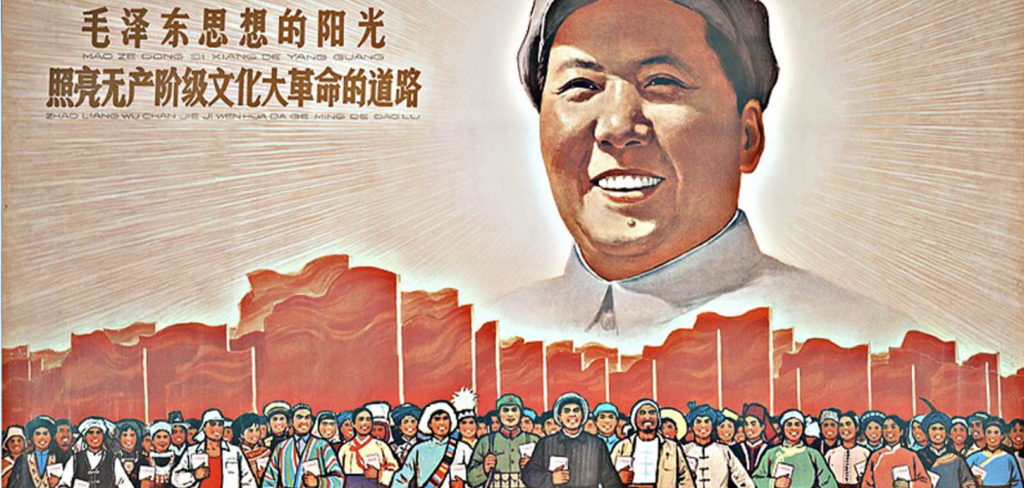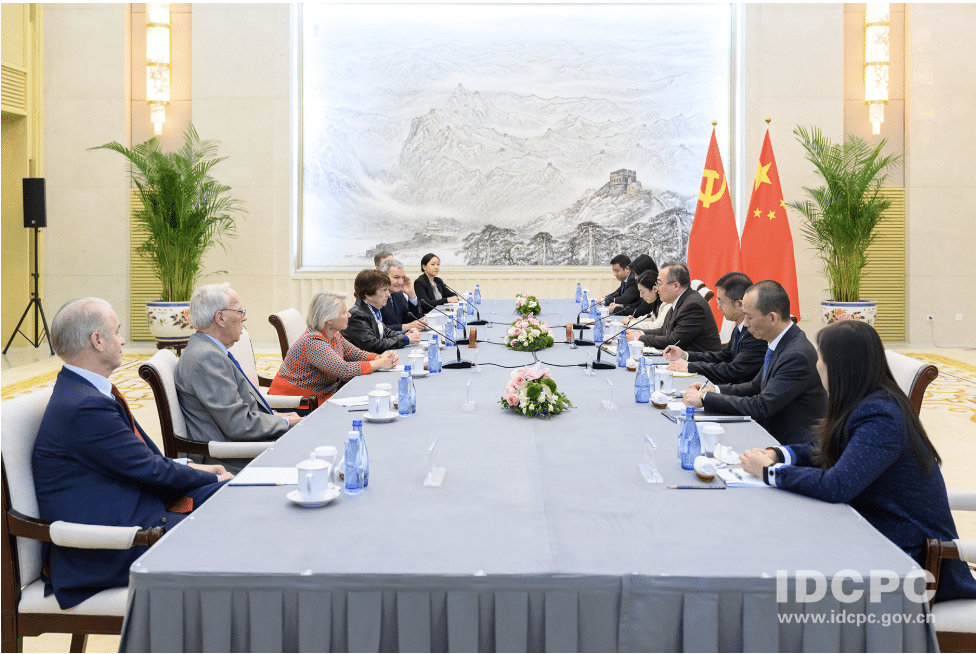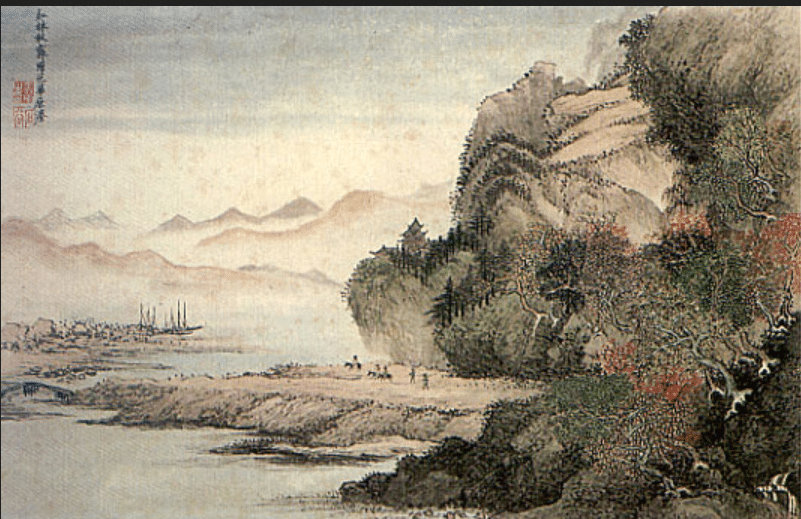Exclusive: A String of Pearls: China, India, and a Global Game of “Weiqi”
The Chinese game of “weiqi” (known to the West as “go”, its Japanese name) is an ancient game that focuses on encircling the other player. This game is very different from chess (also of Eastern origin) as its view on strategy focuses less on winning specific contests but rather on the right contests in order to win in the big picture.

I, like so many other commentators before me, mention this Chinese game in order to draw parallels with global strategy. Encirclement is an oft-used strategy, and today, it plays a role in the Indo-Pacific region (albeit not in an entirely military way). Even if such a strategy is not being implemented, it is certainly being perceived by India as it fears Chinese encirclement through a much debated “String of Pearls.”
In 2005, an internal United States Department of Defense report entitled “Energy Futures in Asia” coined the term “String of Pearls” referring to China’s potential influence in the Indian Ocean region. In past articles, I have noted China’s interest in maintaining its interests along the global maritime lines of communication. The Indian Ocean region has long been an important means of Chinese global trade long before the ancient Chinese admiral Zheng He made his treasure voyages in the 1400s.
The sea lanes of the Indian Ocean, which connect China to Africa, the Middle East, and Europe, are China’s lifeblood, providing the means of Chinese energy and trade security. It is not difficult to find the Chinese interests in the region, and considering the dangers posed by terrorism and piracy, a Chinese role in the region would not be unwelcome.

However, China’s fears in the Indian Ocean go beyond piracy and terrorism. According to a 2010 opinion piece on China.org.cn, Shen Dingli advocates for overseas Chinese military bases, arguing that “the real threat to us is not posed by the pirates but by the countries which block our trade route.”
It seems Shen’s concerns have reverberated into 2016 as China has already broken ground building a military facility in Djibouti. The base is situated between the pirate-infested Gulf of Aden and the Red Sea which connects to the Mediterranean Sea and Europe through the Suez Canal. The Djibouti government has welcomed China’s involvement and the country already hosts US, French, and Japanese military facilities.
China has already cooperated with NATO on anti-piracy operations in the Gulf of Aden and the base’s intent is to continue anti-piracy operations in the region. However, it is difficult to forget Shen’s statements about the real dangers faced by China and the need for military bases to prevent other countries to block China’s trade routes. More striking is Chinese Foreign Minister Wang Yi who, after the announcement of the ground-breaking of a Chinese base in Djibouti, hinted at the possibility of more Chinese offshore naval bases. Ankit Panda, writing for The Diplomat, highlights Pakistan, Myanmar, Sri Lanka, the Maldives, and the Seychelles as candidates who could potentially host another Chinese base.
Chinese bases have always been a concern for India, who sees China’s growing involvement in the Indian Ocean as a sort of encirclement. The string of pearls, a maritime encirclement of India, would be problematic for India as it would need to compete with China for its historical stomping grounds and the important maritime lanes that run through the Indian Ocean. Even more alarming for New Delhi is that the encirclement of the string of pearls would cut India off from easy access to Diego Garcia, the US-UK naval base in the Indian Ocean. In recent years, China has undertaken many projects around South Asia, investing in infrastructural projects and undergoing joint defense relationships.

Bangladesh
China’s military cooperation with Bangladesh left New Delhi wary of Chinese involvement too close to India’s shores. Bangladesh and China have built a strong military relationship, with China as Bangladesh’s largest military equipment supplier. Around 2010, there was talk of Bangladesh’s Chittagong Port being a strategic enclave, one of China’s “pearls”. China invested heavily in Bangladesh, developing the ambitious deep sea Chittagong Port. It also consisted of a motorway that would run from the coast of Bangladesh across Burma into China.
China’s investment into Bangladesh and Burma can be seen as a way to bypass the Malacca Strait which hosts the majority of Chinese shipping. A port in the Indian Ocean would be a strong advantage for China to be able to bypass the Strait which is bordered by Singapore and the Changi Naval Base, which hosts US troops.
Despite growing suspicion from India, in 2015 Bangladesh and India signed an agreement to let Indian cargo vessels use Chittagong port. This move was able to relax Indian fears of the port being one of China’s pearls and opened the door for cooperation between Bangladesh, India, and China through the port.

Sri Lanka
The relationship between China and Sri Lanka has been particularly drenched in political undertones. Under the presidency of Mahinda Rajapaksa, Sri Lanka sought close relations with China. Rajapaksa welcomed much Chinese investment into the country’s infrastructure projects, including the Hambantota Port in southern Sri Lanka, built alone one of the region’s biggest sea lanes. Another project, the Colombo Port City, which also had heavy investment from China broke ground in 2014.
However, in 2015, Rajapaksa was replaced by Maithripala Sirisena, who won the presidency with a platform critical of Chinese influence in the country.At first glance, Sirisena’s victory was a strong turnaround for the “string of pearls”, however, the Sirisena administration decided to okay the China invested project and construction resumed.
This should not be taken as a surprise, as Sri Lanka “is in no position to turn its back on Chinese investment or alienate Beijing.”

Maldives
China has invested heavily in infrastructure projects in Maldives. This investment strategy has given China a strong foothold among many Indian Ocean nations. In a September 2014 visit, President Xi Jinping and Maldivian President Abdulla Yameen, agreement on infrastructure projects including housing and road projects, as well as developing the Male airport and the construction of a bridge from Male to Hulhule, the island that holds Male International Airport.
However, in order to quell New Delhi’s fears about the close cooperation between China and the Maldives, President Yameen assured Indian Prime Minister Modi that Maldives has no intention of hosting a Chinese military base. Much like Sri Lanka and Bangladesh, the Maldives want to keep a strong relationship between both China and India without antagonizing one or the other.

Pakistan
Pakistan has had a long history of conflict with its eastern neighbor. Both countries have fought a series of wars with each other which pose major political dangers, as both countries are nuclear powers. In recent years, however, China has seen much potential in Pakistan and has pursued close relations with India’s western neighbor.
In 2015, China and Pakistan marked “their ambitious USD 46 billion economic corridor project with Beijing acquiring over 2,000 acres of land in restive Balochistan to develop the strategic Gwadar port.” From China’s perspective, the Gwadar port is incredibly beneficial as it borders the Arabian Sea. From the Arabian Sea, China would be able to send it shipping through the Gwadar port, through Pakistan and into China as the two countries share a border. Despite the potential of piracy and terrorism, the China-Pakistan Economic Corridor, would be beneficial for securing Chinese shipping from the Middle East, Africa, and Europe without having to use the Malacca Strait.
While Bangladesh, Sri Lanka, and the Maldives have all been sure to assure New Delhi that Beijing, while contributing to infrastructure projects, would not maintain a military presence that would force the respective country to choose between the two, Pakistan is a much more difficult situation as Pakistan could see China as a source of leverage over its eastern neighbor.
More concerning than the trade relationship between China and Pakistan is the military relationship that has taken place between the two countries. China has supplied much of Pakistan’s weapons and has even sold it eight submarines in 2015.
Despite New Delhi’s fears of Chinese encirclement, it seems that only Pakistan poses an existential threat to India. However, this is not so much a product of Chinese influence as it is of historical bad blood.

The weiqi board analogy
From the perspective of a weiqi board, it seems that China’s stones have spread around India, from Southeast Asia to Africa. However, in keeping the analogy, it would seem that India has set a few stones around China as well.
In the great proverbial weiqi board that makes up the Indo-Pacific region, while China has reached out for more influence in the Indian Ocean, India, Japan, and ASEAN have cooperated greatly in a way that also seems to be encircling China.

While India has made it clear that it will not be running patrols in the South China Sea, India and Japan have both taken a position on the situation. India has recently expressed much more interest in ASEAN, particularly with Modi’s “Look East” policy. While India has been rhetorically spreading more interest in ASEAN however, the reality leaves much to be desired.
More so than India, Japan has sought very close relations with ASEAN, so much so that the Diplomat’s Koh Swee Lean Collin calls it Japan’s “maritime pivot” to Southeast Asia. Recently, Japan has been much more involved in Southeast Asian infrastructure projects and has also pursued closer defense relations with the Philippines, one of the major parties in the South China Sea dispute.
In an earlier article, I mentioned that the US Admiral Harry Harris, Jr., Commander of the US Pacific Command, may be trying to resurrect the Quadrilateral Security Dialogue. Using the weiqi analogy, it seems much more apparent that rather than an encirclement of India by China, an encirclement of China by the US (and partners) is much more apparent.
Finally, while the string of pearls continues as an important concern in the United States and India, it is important to note that the nuances of China-India relations go beyond just the security aspects. China and India are both members of the BRICS and plan to cooperate through a variety of new international institutions like the Asian Infrastructure Investment Bank and the BRICS-led New Development Bank.

Also, China and India have sought close economic relations. While and China’s One Belt, One Road initiative (the maritime part of which is sometimes interpreted as another name for the string of pearls), is not only an attempt to create strong trade relationships between China and India’s neighbors, but with India itself. While a trade deficit between the two still favors China, there is still increasing Chinese investment in India.
Finally, not only are Sino-Indian relations being conducted between Beijing and New Delhi, but between the individual Indian states and Chinese provinces. The leaders of the states and provinces help to create a much stronger and intertwined economic relationship than would exist if only Beijing and New Delhi conducted relations.
Tridivesh Maini reminds us that “neither India nor the United States should look at Sino-Indian relations as a zero-sum game”. While India will continue to be suspicious of the string of pearls, the strategy (if it is one) will not push China and India into immediate conflict. Additionally, New Delhi’s relationship with Washington will not be at the expense of its relationship with Beijing as China and India will likely cooperate to face a multitude of issues. If anything, Narendra Modi’s achievement has been his ability to cooperate with Obama, Xi, and Abe in order to bring the cumulative economic cooperation for the benefit of India.
By AARON WALAYAT Mar. 21, 2016 on USCNPM








